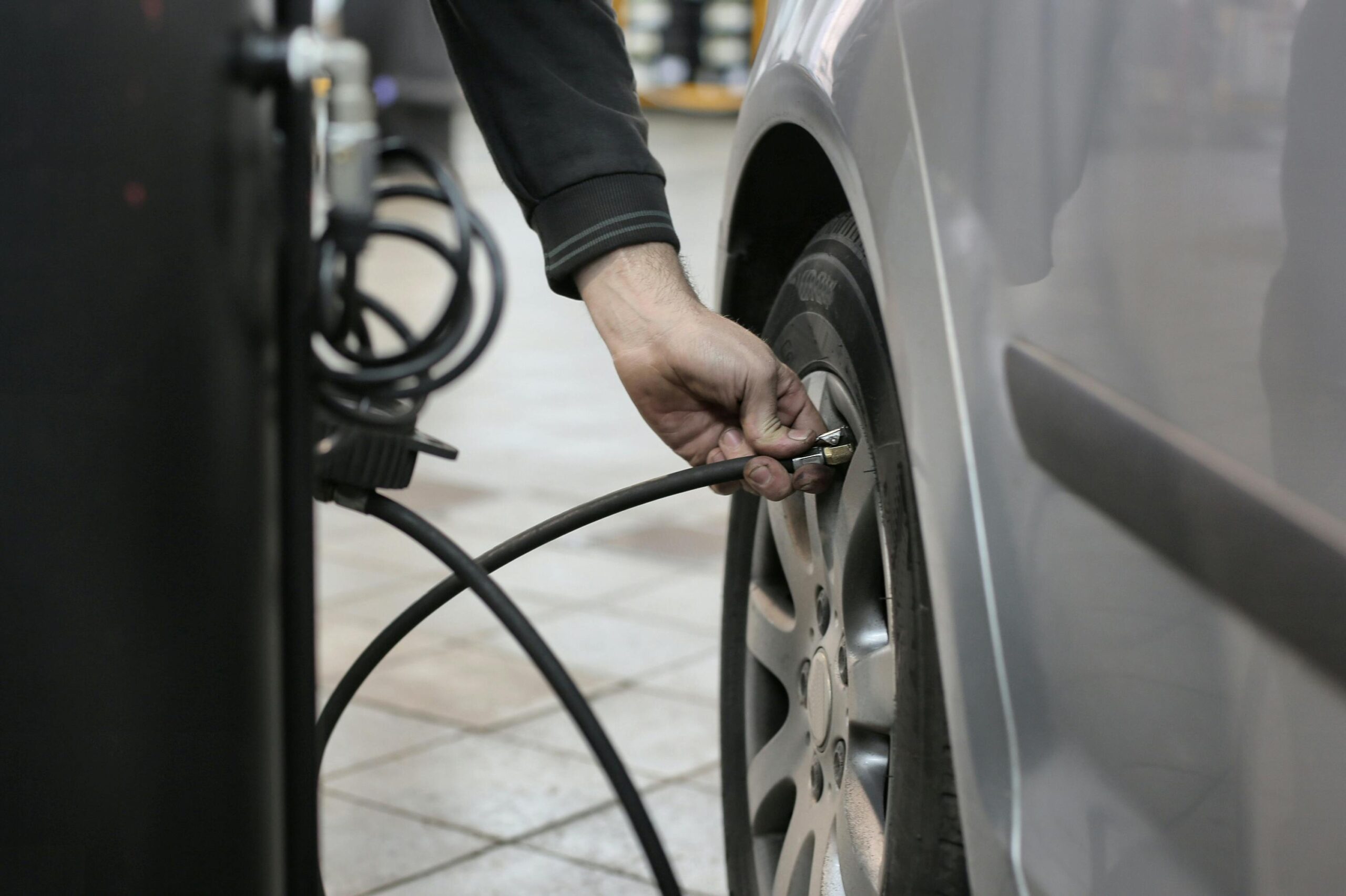Use your car’s built-in TPMS (Tire Pressure Monitoring System), a low-cost manual tire-pressure gauge, or a Bluetooth-enabled sensor with a phone app to keep your tires at the recommended pressure.
This simple, tech-assisted habit supports SDG 13: Climate Action by improving fuel efficiency, reducing carbon emissions, and extending tire life — without requiring expensive gadgets.
Why It Matters
- Driving with under-inflated tires can reduce fuel economy by 2–3%.
Vehicles running at 75% of the recommended tire pressure use about 2–3% more fuel.
(Source: U.S. DOE – Fact #983: Proper Tire Pressure Saves Fuel) - Properly inflated tires last longer, reducing tire waste.
Evenly inflated tires wear more uniformly and last longer, which means fewer tires need to be manufactured and disposed of — reducing a major source of microplastics and landfill waste.
(Source: Treehugger – How Proper Tire Inflation Can Help the Environment) - Correct tire pressure lowers global emissions.
Studies show that if all drivers worldwide maintained proper tire pressure, global CO₂ emissions could be cut by millions of tonnes annually because of reduced fuel consumption.
(Source: Aperiatech – Reducing Your Fleet’s Environmental Footprint) - Properly inflated tires save drivers money and improve safety.
The U.S. Department of Energy notes that keeping tires properly inflated can improve gas mileage by up to 3.3%, saving drivers up to 11 cents per gallon of fuel and reducing the risk of blowouts.
(Source: DOE / AFDC – Gas-Saving Tips)
The Impact
If 10 million drivers improved their tire pressure enough to boost efficiency by just 2%, that would save roughly 1 billion liters of fuel annually, preventing an estimated 2–3 million tonnes of CO₂ emissions.
Additionally, longer-lasting tires mean less manufacturing and disposal impact.
How to Start (Today)
- Check Your Car for TPMS: Most cars made after 2007 include a built-in Tire Pressure Monitoring System; look for a tire icon or readout on your dashboard.
- Choose a Cost-Effective Device:
- A manual tire-pressure gauge is the cheapest option (often $5–$10) and works by simply pressing it against the valve stem.
- A Bluetooth tire-pressure sensor (starting around $20) pairs with a smartphone app for easy tracking and alerts.
- Check Monthly: Tire pressure drops over time and faster in cold weather. Test at least once a month or before long trips.
- Inflate to Recommended Levels: Find your car’s recommended tire pressure in the owner’s manual or on the sticker inside the driver’s door. Use a home inflator or a pump at a gas station.
- Track Your Results: Record readings manually or use an app to monitor your fuel efficiency and see the benefits over time.
Bottom Line
You don’t need expensive gadgets to make a difference.
By using a manual gauge or a simple Bluetooth sensor to keep your tires properly inflated, you save fuel, cut emissions, extend tire life, and improve safety — advancing SDG 13: Climate Action with just a few minutes of care each month.




